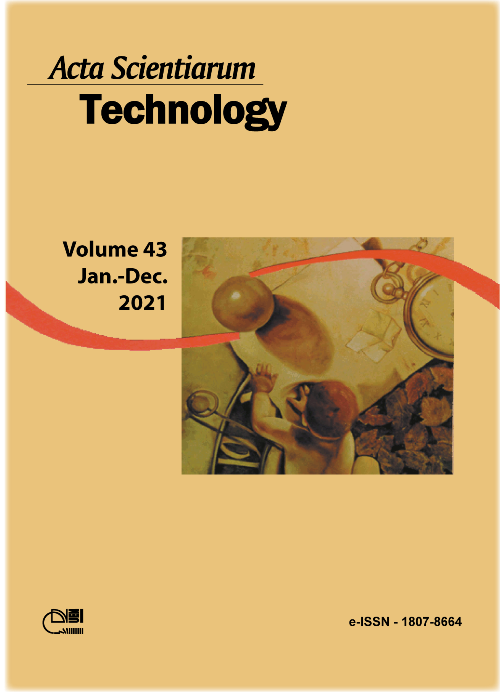Extra and intracellular laccase titers of xylophagic bacteria isolated from adult termite
DOI:
https://doi.org/10.4025/actascitechnol.v43i1.51805Keywords:
kraft lignin; extracellular laccase; Bacillus; Pseudomonas spp.Abstract
Laccase is an important enzyme in terms of its versatile applicability, but its commercial use is limited by factors such as high production cost, low activity and/or stability under given conditions. The objective of this study was to screen xylophagic bacteria isolated from termites for the production of extracellular and intracellular laccases. Six laccase-positive strains were isolated, namely CA, A3, A5, A6, A7 and A8. They were molecularly identified by sequence analysis of 16S rRNA and classified under the genera Bacillus (A7, A8, CA) and Pseudomonas (A3, A5, A6). Laccase was produced by these bacterial isolates by submerged fermentation and was optimized at 37°C, pH 5.5, 6.2 and 7.0, with agitation and 0.5 mM guaiacol (as carbon source). Laccase activity was determined by measuring the oxidation of guaiacol and ABTS (2,21-azino bis[3-ethylbenzthiazoline-6-sulfonate]). Strain A5 produced extracellular laccase titers ranging from 123 to 168 U ml-1. Guaiacol was identified as a better substrate for the quantification of laccase. In conclusion, bacteria harboring the gut of termites can produce extracellular laccase with activity at medium to moderate acidity.
Downloads
Downloads
Published
How to Cite
Issue
Section
License
DECLARATION OF ORIGINALITY AND COPYRIGHTS
I Declare that current article is original and has not been submitted for publication, in part or in whole, to any other national or international journal.
The copyrights belong exclusively to the authors. Published content is licensed under Creative Commons Attribution 4.0 (CC BY 4.0) guidelines, which allows sharing (copy and distribution of the material in any medium or format) and adaptation (remix, transform, and build upon the material) for any purpose, even commercially, under the terms of attribution.
Read this link for further information on how to use CC BY 4.0 properly.















8.png)




